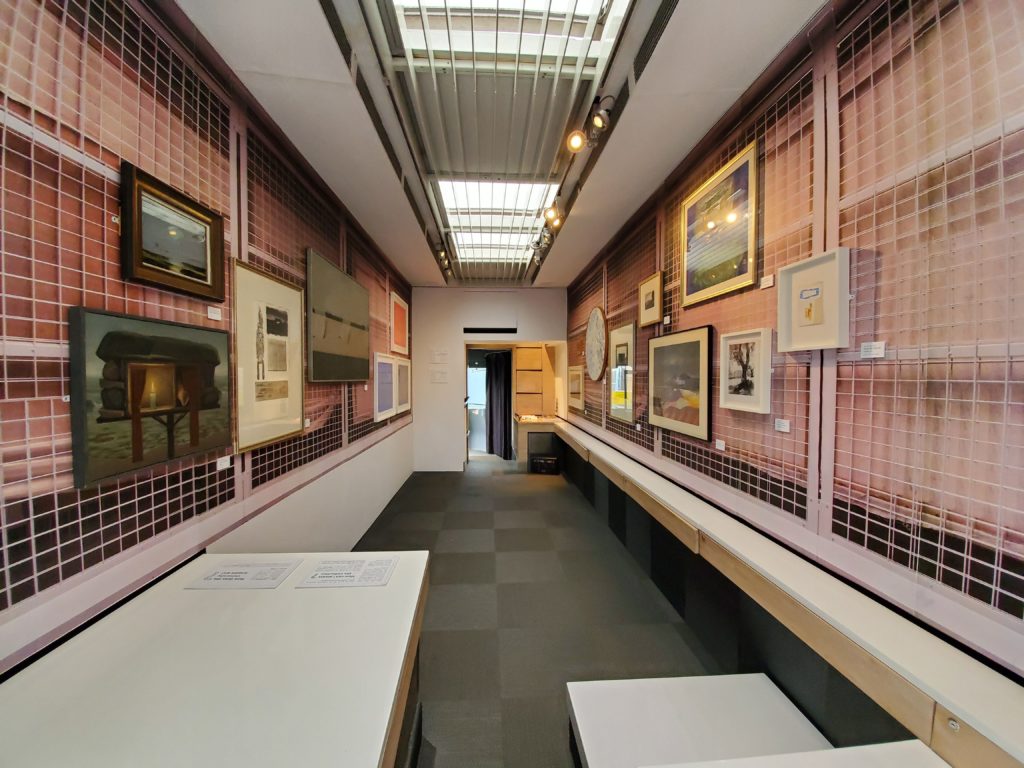As we wrapped up the project and debriefed with Julie-Ann and Claire, we kept discussing access and engagement.
Our two brief problems both hinged on these concepts, in reference to the Art Collection:

Access is also central to both of the institutions’ aims. However, over the course of our de-brief conversations, it became apparent that the two institutions evaluated “access” differently—and that our exhibition had in fact been navigating two distinct modes of access and engagement all along.
As I commented in this post, I think it was a major strength of our exhibition and interpretive text that some viewers found the text enriching, but others chose to enjoy navigating the space without it. Claire additionally remarked that she thought the exhibition was very successful in removing narrative pieces like wall text and hanging the works in a “randomized” way. We had made those decisions in order to mimic the appearance of the actual collection, but it also meant that there was no singular path or narrative to follow inside the Travelling Gallery.

These effects enhanced the accessibility of the exhibition in terms of the Travelling Gallery’s model. Visitors were encouraged to interact with the art on their own terms, and were given the time and space to chat with us about their interpretations (and sometimes just to chat!). Many visitors left the Gallery feeling excited by their visit and a sense of community, but may not have even looked at most of the works or learned about the University Art Collection.
While this may initially seem to imply that we did not succeed in providing “access” to the University Art Collection—if that was to be measured in terms of providing clear information and instructions to every visitor about the Collection and “promot[ing] engagement with [its] holdings”—we realized we had ended up addressing those aspects of the brief in a different way. We discussed with Julie-Ann how it had become apparent that there is a need to separate the internal and the external in our considerations and conclusions, which was a nuance unanticipated by the initial brief.
While the Art Collection needs to raise internal awareness about its holdings within the University, we discovered through this exhibition that it has a different role to play for the general public. Situated managed to successfully bridge the gap between the two partner institutions by presenting a multilayered, non-linear exhibition that operated on two simultaneous planes of access: that of internally testing the potential for the Art Collection to be exhibited publicly, while externally presenting an accessible experience of looking, learning, and discussing for a diversity of visitors.

[Word Count: 438]
[TOTAL Blog Word Count: 6,490]

